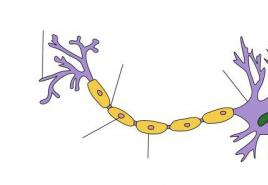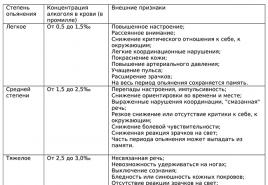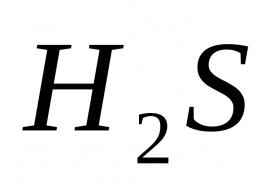Relative molecular weight. Amount of substance
In chemistry, the concept of "molecular weight" is extremely important. Molecular weight is often confused with molar mass. How do these values differ, and what properties do they have?
Molecular mass
Atoms and molecules are the smallest particles of any chemical substance. If you try to express their mass in grams, you get a number in which there will be about 20 zeros before the decimal point. Therefore, it is inconvenient to measure mass in units such as grams. To get out of this situation, some very small mass should be taken as unity, and all other masses should be expressed in relation to it. This unit is 1/12 of the mass of a carbon atom.
Relative molecular weight is the mass of a molecule of a substance, which is measured in atomic mass units. The molecular weight is equal to the ratio of the mass of a molecule of a substance to 1/12 of the mass of a carbon atom. It shows how many times the mass of a molecule of a certain substance is greater than 1/12 of the mass of a carbon atom.

Rice. 1. Table of molecular weights of organic substances.
The atomic mass unit (a.m.u.) is 1.66 * 10 to the -24th degree and represents 1/12 of the mass of a carbon atom, that is, an isotope atom of the carbon element whose mass number is 12. A chemical element in nature can have several stable isotopes, therefore, when talking about the relative atomic mass of an element or, as is often said, about the atomic mass of element A, then the atomic mass of all stable nuclides is necessarily taken into account.
Molecular mass is often confused with molar mass, the unit of which is g/mol. And indeed, numerically, these two quantities are absolutely identical, but their dimensions are absolutely different.
Relative molecular mass can be found by adding together the atomic masses
To calculate the molecular weight of simple and complex substances, it is necessary to find the sum of the relative atomic masses of the atoms that make up the molecule. For example, the relative molecular weight of water Mr (H 2 O), which is known to consist of two hydrogen atoms and one oxygen atom, is 1*2+16=18.
This means that the mass of a water molecule is 18 times greater than 1/12 of the mass of a carbon atom. And the molecular weight of air is 29.

Rice. 2. Formula relative molecular weight.
Atomic mass
The atomic mass of a chemical element is also one of the most important designations in chemistry. Atomic mass is the average value of the atomic masses of the stable natural isotopes of this element, taking into account their relative content in nature (their natural distribution). So, in nature there are two stable isotopes of the element chlorine Cl with mass numbers 35 and 37:
Ar(Cl)=(34.97*0.7553)+(36.95*0.2447)=35.45 - this is the value adopted for the element chlorine as its relative atomic mass.
For the first time, the calculation of atomic weights was made by D. Dalton. He attributed the atomic weights of the elements to the atomic weight of hydrogen, taking it as a unit. However, the weights of the oxygen atom and some other elements calculated in accordance with his principle of "greatest simplicity" turned out to be incorrect.

Rice. 3. D. Dalton.
True atomic masses are minuscule. A hydrogen atom weighs 1.674*10 to -24 grams, oxygen 26.67*10 to -24 grams, and carbon 19.993*10 to -24 grams.
What have we learned?
In the school curriculum in chemistry (grade 8), much attention is paid to such concepts as the relative atomic and molecular mass of a substance. Students study their differences and features, and also learn to determine the masses of gases and substances.
Topic quiz
Report Evaluation
Average rating: 4.3. Total ratings received: 207.
The purpose of the lesson.
P to acquaint students with the concept of "amount of substance", "mole"; form an idea of the molar mass of a substance; teach how to calculate the amount of a substance from a known mass of a substance and the mass of a substance from a known amount of a substance.
Lesson type: a lesson in the study and primary consolidation of knowledge.
Technology: elements of cooperation technology and problem-based learning.
Methods: heuristic conversation, search activity,
Basic concepts. Amount of substance, mole, Avogadro's number, Avogadro's constant, molar mass.
Planned learning outcomes. Know the number of Avogadro, determine the amount of substance and mole. Be able to determine the number of structural units for a given amount of a substance and vice versa. Be aware of the equality of the numerical values of the molar and relative molecular weights. Be able to calculate the mass of a given amount of a substance.
Equipment: multimedia - equipment, D.I. Mendeleev.
During the classes
1. Organizational moment.
Hello dear guys. My name is Alla Stanislavovna, and today I will give you a chemistry lesson.
My friends! I am very pleased
Sign in to your friendly class
And for me already a reward
Attention of your smart eyes
I know that everyone in the class is a genius
But without labor, talent is not for the future,
Cross the swords of your opinions -
Let's write a lesson together!
2. Statement of the problem of the lesson and goals.
And we will start our lesson with a funny, non-standard situation that once happened in a store.
Eighth grader Kostya went into the store and asked the saleswoman to sell him 10 moles of table salt.. What did the saleswoman say to Kostya?
You will answer this question after studying a new topic.
What term is new to you?
I'll tell you today, or something, about the harmful role of moths.
Moth eats wool and fur - just a panic for everyone ...
Well, in chemistry - if you please! There is another word "mole".
And today in the lesson we will get acquainted with this concept.
Our lesson is called “Amount of substance. Molar mass" ( write in a notebook).
The purpose of our lesson:
firstly: to get acquainted with the concept of "amount of substance", "mole";
secondly: to form an idea of the molar mass of a substance;
thirdly: to learn how to calculate the amount of a substance from a known mass of a substance and the mass of a substance from a known amount of a substance.
3. Learning new material.
Everything is measurable. And you are already familiar with the units of mass or volume. For example,
When buying sugar, we determine its ___ (weight) with the help of scales, using units of measurement - _______ (kilograms, grams).
When buying bottled milk, we determine its _____ (volume) using measuring utensils, using units of measurement ______ (liter, milliliter)
We can also determine how many pieces (particles) are in 1 kilogram?
Chemistry is the science of substances. Substances are made up of atoms or molecules. In what units can substances be measured? After all, atoms and molecules cannot be counted and weighed.
And then, to measure the substance, a special unit was chosen, in which two quantities were combined - the number of molecules and the mass of the substance.
Such a unit is called the amount of substance or mole.
To measure 1 mole of a substance, you need to take as many grams of it, what is the relative mass of the substance:
1 mol H 2 weighs 2 g (Mr (H 2) \u003d 2)
1 mol O 2 weighs 32 g (Mr (O 2) \u003d 32)
1mol H 2 O weighs 18 g (Mr(H 2 O) = 18)
And how many real particles - molecules are contained in 1 mole of any substance?
It has been established that 1 mole of any substance always contains the same number of molecules. This number is equal to 6 10 23 . For example,
1 mole of water = 6 . 10 23 H 2 O molecules,
1 mole of iron = 6 . 10 23 Fe atoms,
1 mole of chlorine = 6 . 10 23 Cl 2 molecules,
1 mol of chloride ions Cl - = 6 . 10 23 ions Cl - .
In honor of the Italian scientist Amedeo Avogadro, this number was called Avogadro's constant.
Denoted N A = 6?10 23
The Avogadro constant is so large that it is difficult to imagine.
The Sahara desert contains less than three moles of the finest grains of sand.
If you take 1 mole of dollar bills, they will cover all the continents of the Earth with a 2-kilometer dense layer.
Now we can write down the definition of the concept of "mole".
A MOLE is the AMOUNT of a SUBSTANCE that contains 6 10 23structural units of a given substance -molecules oratoms.
The amount of a substance is indicated by the letter - n, measured in moles
To find out the number of molecules (N), you can use the formula:
knowing the number of molecules, you can find the amount of substance:
And what needs to be done to measure 1 mole of a substance?
You need to take as many grams of this substance as its relative molecular weight.
The mass of 1 mole of a substance is called the molar mass. It is denoted by the letter - M. is found by the formula:
What units will the molar mass be measured in?
measured in (g/mol)
The molar mass coincides in value with the relative atomic or molecular mass, but differ in units of measurement (M - g / mol; Mr, Ar - dimensionless quantities).
M (g/mol) = Mr
The table shows the molar masses for illustration purposes. M for several substances of different structure.
Table. Molar masses of various substances.
|
Substance |
Molecular or atomic mass Mr, (Ar) |
Molar mass M |
Avogadro's number |
|
Water H 2 O |
6.02?10 23 molecules |
||
|
Calcium oxide CaO |
6.02?10 23 molecules |
||
|
Carbon 12 C |
6.02?10 23 atoms |
||
|
6.02?10 23 atoms |
|||
|
Chlorine atom Сl |
35.5 g/mol |
6.02?10 23 atoms |
|
|
Chlorine Cl 2 molecule |
6.02?10 23 molecules |
The molar masses of substances differ from each other, but the amount of the substance remains the same - 1 mol.
Number of moles of a substance n found from the mass ratio m of this substance (g) to its molar mass M (g/mol).
Therefore, the mass can be found by the formula:
Let's establish the relationship of the main quantities: m = n ? M, n \u003d m / M, M \u003d m / n, n \u003d N / N A, N \u003d n? N A, where N A 6.02?10 23 mol -1
4. Fixing the material
We have determined how the quantity and mass of a substance are related. Now let's solve the problems using the concepts discussed above.
Task #1 . Determine the mass of oxygen by the amount of substance 3.6 mol.
Task #2 . How much of the substance will contain 64 g of oxygen?
Task #3 . Calculate the amount of substance and the number of molecules contained in carbon dioxide with a mass of 11 g.
Task 4 . Find the mass of 24 . 10 23 ozone molecules O 3.
Let's try to answer the question asked at the beginning of the lesson:
if the saleswoman studied well in the eighth grade, then she will quickly calculate: mass (? ACl) \u003d 58.5 (g / mol)? 10 (mol) \u003d 585 grams.
After that, she pours salt into the bag, weighs it and politely says "Pay to the cashier."
5. Homework.
So, friends, it's time to say goodbye.
And I want to wish you:
Always eager to learn
Always willing to work.
And never be discouraged.
Literature:
- Alikberova L.Yu. Entertaining chemistry, M, "AST-PRESS", 1999
- Berdonosov S.S., Chemistry 8 class, Miros, 1994.;
- Newspaper "Chemistry at school" No. 44 1996 S. 9.
- Gabrielyan O.S. Chemistry grade 8. M.: Bustard, 2007.
- Ivanova R.G. Chemistry 8-9 grade. M.: Education, 2005.
- Novoshinsky I.I. Novoshinskaya N.S. Types of chemical problems and ways to solve them Grades 8-11. Moscow: Onyx 21st century.
- Educational collection. Chemistry. Basic course. 8-9 grade. Laboratory of multimedia systems of MarSTU. Yoshkar-Ola, 2003.
Try to evaluate your own knowledge and skills after today's lesson
- I understand everything, I can teach others.
- I can explain a new topic with some help.
- It's hard for me to figure it out on my own, I need help.
|
Formula |
Molar mass (M, g/mol) |
Weight (m, grams) |
Number of particles (N) |
||
|
Formula |
Relative molecular weight (Mr) |
Amount of substance (n, mol)) |
Molar mass (M, g/mol) |
Weight (m, grams) |
Number of particles (N) |
|
Formula |
Relative molecular weight (Mr) |
Amount of substance (n, mol)) |
Molar mass (M, g/mol) |
Weight (m, grams) |
Number of particles (N) |
Atoms and molecules are the smallest particles of matter, therefore, as a unit of measurement, you can choose the mass of one of the atoms and express the masses of other atoms in relation to the selected one. So what is molar mass, and what is its dimension?
What is molar mass?
The founder of the theory of atomic masses was the scientist Dalton, who compiled a table of atomic masses and took the mass of a hydrogen atom as a unit.
Molar mass is the mass of one mole of a substance. A mole, in turn, is the amount of a substance that contains a certain amount of the smallest particles that participate in chemical processes. The number of molecules in one mole is called Avogadro's number. This value is constant and does not change.

Rice. 1. Avogadro's number formula.
Thus, the molar mass of a substance is the mass of one mole, in which there are 6.02 * 10^23 elementary particles.
Avogadro's number got its name in honor of the Italian scientist Amedeo Avagadro, who proved that the number of molecules in equal volumes of gases is always the same.
Molar mass in the International SI system is measured in kg / mol, although this value is usually expressed in grams / mol. This value is denoted by the English letter M, and the molar mass formula is as follows:
where m is the mass of the substance and v is the amount of the substance.

Rice. 2. Calculation of the molar mass.
How to find the molar mass of a substance?
The table of D. I. Mendeleev will help to calculate the molar mass of a substance. Take any substance, for example, sulfuric acid. Its formula is as follows: H 2 SO 4. Now let's turn to the table and see what is the atomic mass of each of the elements that make up the acid. Sulfuric acid consists of three elements - hydrogen, sulfur, oxygen. The atomic mass of these elements, respectively, is 1, 32, 16.
It turns out that the total molecular weight is 98 atomic mass units (1 * 2 + 32 + 16 * 4). Thus, we found out that one mole of sulfuric acid weighs 98 grams.
The molar mass of a substance is numerically equal to the relative molecular mass if the structural units of the substance are molecules. The molar mass of a substance can also be equal to the relative atomic mass if the structural units of the substance are atoms.
Until 1961, the oxygen atom was taken as an atomic mass unit, but not the whole atom, but its 1/16 part. At the same time, the chemical and physical units of mass were not the same. The chemical one was 0.03% more than the physical one.
At present, a unified measurement system has been adopted in physics and chemistry. As a standard e.a.m. 1/12 of the mass of the carbon atom is chosen.

Rice. 3. Formula of the unit of atomic mass of carbon.
The molar mass of any gas or vapor is very easy to measure. It is enough to use control. The same volume of a gaseous substance is equal in quantity to another at the same temperature. A known way to measure the volume of steam is to determine the amount of displaced air. This process is carried out using a side outlet leading to the measuring device.
The concept of molar mass is very important in chemistry. Its calculation is necessary for the creation of polymer complexes and many other reactions. In pharmaceuticals, the concentration of a given substance in a substance is determined using molar mass. Also, the molar mass is important in the provision of biochemical studies (the exchange process in the element).
Nowadays, thanks to the development of science, the molecular weights of almost all blood components, including hemoglobin, are known.
What have we learned?
In the 8th grade in chemistry, an important topic is the "molar mass of a substance." Molar mass is an important physical and chemical concept. Molar mass is a characteristic of a substance, the ratio of the mass of a substance to the number of moles of this substance, that is, the mass of one mole of a substance. it is measured in kg/mol or gram/mol.
Topic quiz
Report Evaluation
Average rating: 4.2. Total ratings received: 331.
Chemistry is a science of extremes. In the sense that the actual, real, describing the reality of the numbers in it are either extremely small or extremely large. A lot of people would be frightened by a number with 23 zeros. It's really a lot. But there are so many units (pieces) contained in one mole of a substance. Would you like to carry out calculations with such colossal numbers? It is not comfortable. But nowadays, any student solves chemistry problems with a sheet of paper and a simple calculator. This is possible thanks to a special simplification language created by chemists. And one of the main phrases of this language is “molar mass”.
Formula by definition
Determining the molar mass is simple: the mass of a substance should be divided by its chemical amount. That is, you will find out how much one mole of a given substance weighs. There is another way to determine the molar mass, but the main thing here is not to get confused. The molar mass is numerically equal to the atomic or molecular mass. But the units of measurement are different.

In general, why?
In what situations would you need a molar mass? A classic example is the need to identify the formula of a substance. Not all substances and not in all situations can be determined by chemical properties and appearance, sometimes it is necessary to consider quantitative ratios. If you know the actual quantities of substances, you can calculate the kind of atoms and their proportions in the substance. And you will need the help of an old chemist. Really very old. Mendeleev himself.
Relationships of concepts
How will the table of the great scientist help us? The molar mass of a substance is equal in number to the atomic (for atomic substances and pure metals) or molecular mass, but is measured in other units. This characteristic of a substance will be indicated in grams per mole, molecular - in atomic mass units. How is it that these numbers are the same? Those values that you see in the table for the elements were calculated empirically. Each kind of atom was weighed and its mass determined in convenient units. Therefore, you see not a minus twenty-seventh degree, but quite decent numbers, most often within one and a hundred. There are also heavyweight elements, but they are usually not mentioned in school problem books.
If not all numbers are at hand

But what if the substance is made up of molecules and you know what it is? How is the molar mass of a substance searched for if its mass and chemical quantity are not available simultaneously according to the conditions of the problem? It's simple, find each type of atom (element) in the table and multiply the atomic masses by the number of atoms in the molecule for different elements. And then you just sum it up - and you get the molecular weight, which will exactly match the molar mass. For modern young chemists, everything has already been prepared - for a known formula of a substance, it is not a problem to calculate the desired value.
If you understand the essence of chemistry, it will seem very easy to you. The main burden in mastering this science is to study and memorize the properties of specific substances, but the general processes and descriptions are nowhere easier. Once you understand, practice - you will never get confused in your life.







